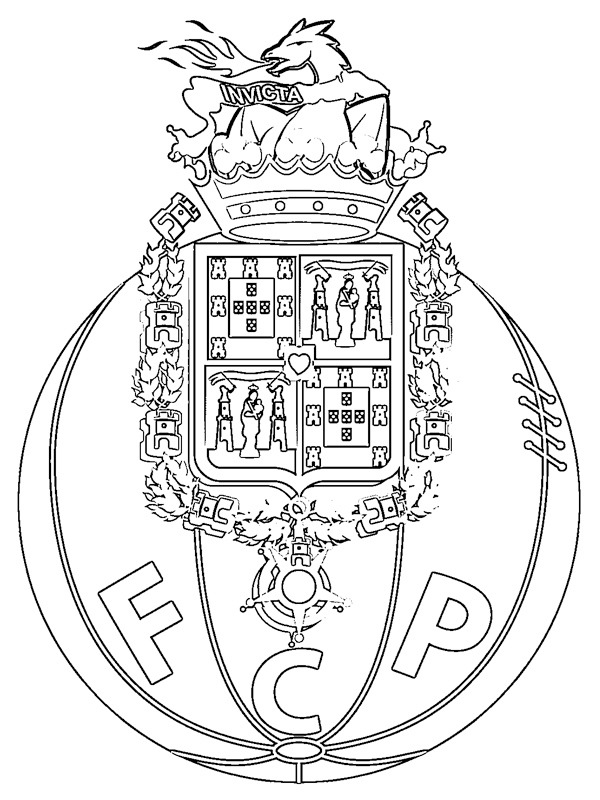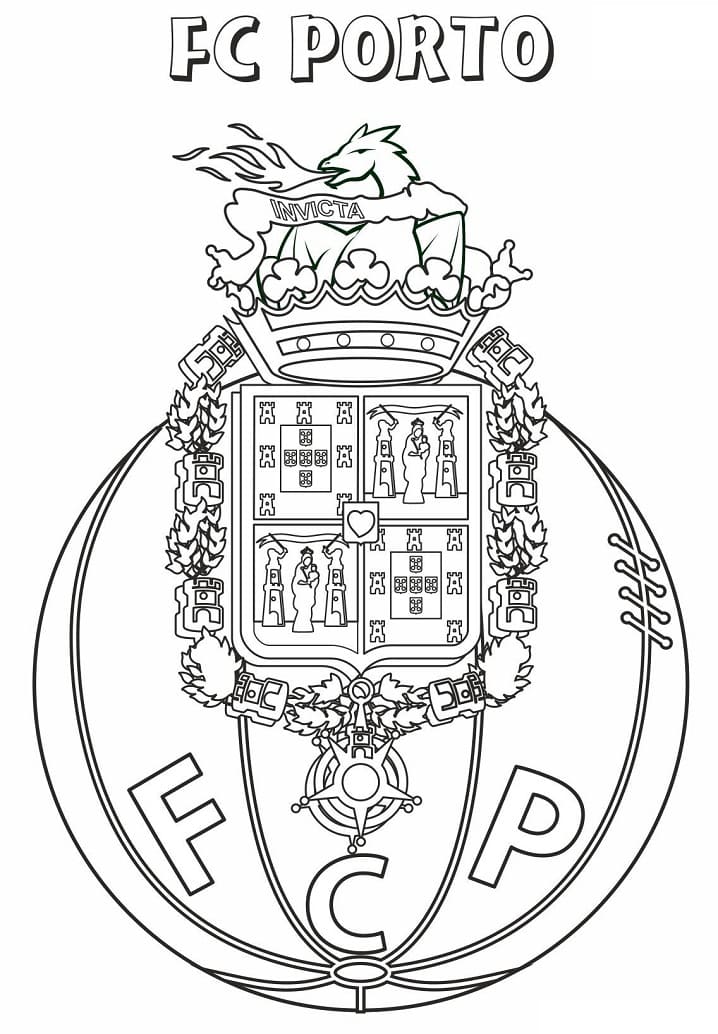FC Porto is a Portuguese multi-sports club based in Porto. Although they compete successfully in several sports, FC Porto is best known for its association soccer team.
Now you can find your favorite club here. Here are the FC Porto coloring pages to print. Please prepare your desired colors and color them as you like.
Free FC Porto Coloring Pages

fc porto coloring pages 
fc porto logo coloring pages 
free fc porto coloring pages 
printable fc porto coloring pages
September 1893. An active and dynamic FC Porto was born from nothing, from a secret ambition that could no longer be repressed.
António Nicolau d’Almeida, sportsman par excellence and an excellent Port Wine merchant invited the Club Lisbonense for a soccer match in his capacity as club president.
The first blue and white appearance went down in history. In books, in pages yellowed by time, this is the oldest record of the Protista activity.
The following years were ones of growing enthusiasm. José Monteiro da Costa wanted to bring together, in a communion he wished would be fruitful, the diverse work of the sports community in Porto, most of the Portuguese, and solid representation from England, the birthplace of the game that would come to enchant the city.
The English impulse even led him to extinguish the Recreational Group “O Destino”, which he presided, in favor of FC Porto. The structure was forming.
The founders, workers, and men who were truly determined to create something that would make future generations proud immediately guaranteed a special place in a club that already felt special.
Their boldness made them choose blue and white for the club’s colors. They bet on tranquility and purity and remained faithful to the cultural and sportive principles.
On a broader level, they believed they could represent a country that then had the same colors on its banner.
FC Porto now had a national and universal vocation. In 1922, the city council gave the club permission to use the city’s coat of arms, and, according to a drawing by Simplício, the emblem took on its current shape.
It contained the national coat of arms, the patron saint of Porto (Our Lady of Vandoma), the necklace of the Order of the Tower and Sword attributed to “Invicta”.
The heart of King Pedro IV (given to Porto for its bravery in defense of freedom), a duke’s crown, and a dragon is an element of the weapons of former kings of Portugal. The club was now a symbol that began to incite passions.
In 1948, the 3-2 victory over Arsenal of London, the best team globally, is clear proof of the potential that protists quickly reached.
In the golden anniversary year of national soccer, the most captivating country club that served as a model in the popular sport surrendered to blue and white supremacy. FC Porto would go on to propel the entire Portuguese sport.
The PortoGaia Training and Sports Formation Center and the Dragão stadium place the club in avant-garde levels that are hard to match.
The future is bright. FC Porto redoubles its strength by working in unique and modern conditions, fully respecting its past. Titles such as the UEFA Cup in 2002/03, the UEFA Champions League in 2003/04, the Intercontinental Cup 2004, and the Europa League in 2010/11 prove this undeniable reality.
FC Porto became the Portuguese club with the most titles at the end of this last season due to its overwhelming dominance over the previous decades.
The force of modernity has made it imperative to take a new step in enriching the patrimony of FC Porto. It provides a modern stadium, more functional, more comfortable, and better adjusted to the demands of soccer at the highest level, the inseparable excellence of Porto history.
With a capacity for 50,399 spectators, with unique features that, enriched by the placement of green spaces and the restructuring of the roads annexed to the sports, residential and commercial complex, materialize a new centrality in the city of Porto, the Dragão is affirmed as a sports and cultural reference point of the town and the region.
